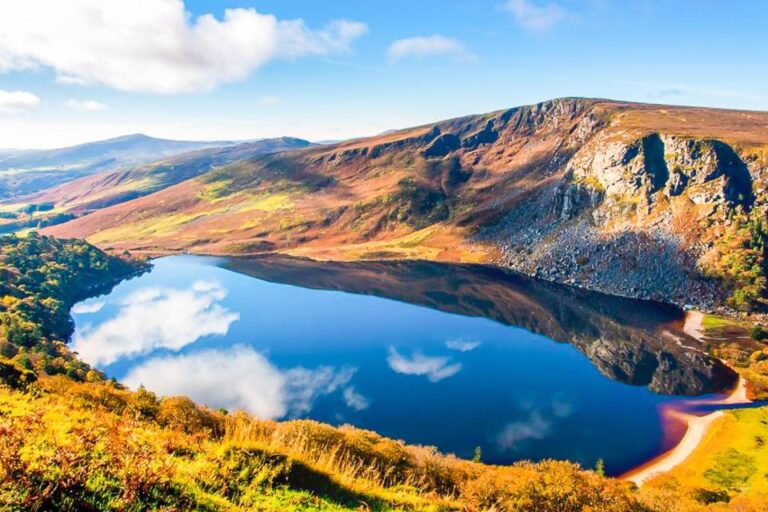How Big Are Owls? An In-Depth Look At These Amazing Birds
Owls are some of the most fascinating and beautiful birds in existence. Their large eyes, wide wingspan, and nocturnal habits make them an intriguing species to study. This article will take a closer look at the size of these majestic creatures, from their tiny screech owl cousins to their massive great grey kin. Get ready to be amazed by just how big owls can get!
Anatomy of an Owl
The owl is an enigmatic and captivating bird, often associated with intelligence, wisdom and good fortune. Its unique anatomy has been the subject of fascination for centuries. Here we will examine the various components that make up this mysterious creature.
Feathers: Owls are well-known for their signature feathers which come in a variety of shapes, sizes and colors. The two main types of feathers found on owls are contour feathers which cover most of the body, providing insulation from cold temperatures as well as waterproofing; and downy feathers located beneath the contours to provide extra warmth and insulation during colder months.
Wings: Unlike other birds whose wings are narrow at their tips, owls’ wings have broad tips that allow them to fly silently through the night sky without being detected by prey or predators alike. This unique structure allows them to maneuver quickly while hunting without making a sound – giving them a distinct advantage over other animals in nocturnal environments. Their distinctive flight pattern also serves an additional purpose: it helps create air turbulence around their bodies which aids in keeping them warm during cold winter nights when they can be seen hovering above open fields searching for food sources below.
Eyes & Vision: An owl’s eyes are large compared to its head size – they take up almost half its face! These remarkable organs contain many more rods than humans’ eyes do; allowing owls to detect even faint light sources such as stars or moonlight during nighttime hours when other creatures would be unable to see anything at all. Plus, their vision is enhanced by highly developed binocular vision – meaning both eyes look in the same direction simultaneously – facilitating accurate depth perception when swooping down upon unsuspecting victims from high altitudes above ground level.
Finally, because an owl’s eyeballs cannot move within its skull like ours can (they’re fixed into place), these remarkable creatures must rotate entire heads instead so as not to miss any potential prey items lurking about nearby!
Types of Owls
Owls are one of the most interesting and diverse species in the avian world. With over 200 living owls, classified into two families, there is an abundance of knowledge to discover about these incredible birds!
First we’ll look at the family Strigidae – this group consists of all ‘true’ or ‘typical’ owls like Barn Owls and Great Horned Owls. These species have large heads with a distinct facial disk that serves as a funnel for sound waves which helps them locate their prey. They also have strong talons used to capture prey, and they feed on small mammals like voles and mice. All true owls are nocturnal predators – they hunt during the night while other animals sleep, giving them access to more food than daytime hunters can find.
The second family is Tytonidae – these include members such as Barn Owls and Grass Owls, both of which share similar characteristics with their cousins from Strigidae but differ slightly in morphology due to adaptation for different lifestyles. For example Tytonids possess longer legs adapted for hunting on open plains rather than forest habitats favored by typical owl species; they also tend to be paler in coloration than those found in Strigidae in order better blend into grassy or sandy surroundings when hunting their prey items like lizards and insects.
The last family we will explore today is called Aegolius- this includes smaller owl species such as Saw-Whet Owl ,Northern Pygmy Owl , Elf Owl ,and Flammulated Owl . As opposed to larger more powerful relatives these tiny raptors specialize in catching invertebrates like moths instead of mammals commonly eaten by larger types making up majority of their diet . Physically speaking they usually lack distinct facial disks seen in other groups allowing them greater maneuverability through dense vegetation common among some areas inhabited by our little friends here . Lastly special feather arrangements allow silent flight essential tool when sneaking up on unsuspecting victims !
To sum it up there is much diversity within bird kingdom especially amongst its feathered inhabitants known widely under name “owls” ! While some resemble classic stereotype others may surprise us with unique adaptations making each type perfectly suitable for specific environment it inhabits . So next time you spot something flying nearby don’t forget how many kinds await appreciation out there !
Size Differences between Species
Humans
The average human size varies greatly across the globe. The average height for an adult male is 5 foot 9 inches and 4 foot 11 inches for an adult female. Variations in size are largely due to genetics, nutrition, age, hormones and overall health of a person. People living closer to the equator tend to be shorter than those who live farther away from it due to varying amounts of sunlight exposure which affects levels of Vitamin D necessary for growth and development.
When it comes to weight, males on average weigh about 196 pounds while females tend to weigh around 166 pounds depending on body composition and muscle mass. Body fat percentage tends to varry as well with men having higher muscle mass typically leading them closer towards 10-20% body fat whereas women have slightly higher percentages ranging closer between 20-30%.
Animals
Animal sizes vary widely among different species as well though they rarely exceed that of humans in terms of weight or height. For example cats range from 2 – 16 pounds with heights ranging from 8 – 15 inches at the shoulder when standing upright; dogs can range anywhere between 4 – 180 pounds depending on their breed type with heights averaging 12 – 28 inches tall again based on their breed; horses usually stand between 14-17 hands high (a hand being equal four inch) weighing anywhere from 800 – 2000 lbs depending on their breed type; cows generally range in weight between 1500 – 2100 lbs and stand 48– 60 inches tall at the shoulder once fully grown; elephants by comparison can reach up to 13 feet tall and tip scales up around 12000lbs!
Insects
Insects have some interesting differences when compared against other animals including mammals like humans or even other invertebrates such as fish or reptiles. While most insects such as cockroaches may measure only 1/2 inch long, others like dragonflies may be 6 times larger reaching lengths over 3inches long! Weight wise many insects have incredibly small bodies also measuring just milligrams while large ones like certain types of moths can reach up until 35 grams per individual insect!
Reasons for Varying Sizes among Owls
The variety of sizes and shapes among owls is astonishing. Owls range in size from the tiny Elf Owl to the large Eurasian Eagle-Owl, with wingspans that vary by more than a meter. To understand why this variation exists, it’s important to look at the evolutionary forces driving these differences.
Adaptation
One of the major reasons for this diversity is adaptation. Over time, different species of owl have evolved to fit into specific niches and habitats, giving them an advantage over other birds competing for food or nesting sites. For example, larger species such as Great Horned Owls are better suited for hunting prey in open fields or meadows due to their increased speed and agility when flying long distances; whereas smaller owls like Screech Owls can take refuge in wooded areas where they can hide from predators and easily capture small rodents after dark.
Geography
Different owls are found throughout various regions around the world, each adapted specifically to its environment. The Burrowing Owl inhabits prairies and grasslands while Spotted Wood Owls live primarily in tropical forests near rivers or swamps. Each geographic region also has a unique set of predators which put pressure on owl populations forcing them to evolve differently depending on their location – some become bigger while others become smaller so they can better evade their enemies’ grasp!
Climate
The climate also contributes significantly towards varying sizes among owls – cold climates require larger bodies with greater amounts of insulation (feathered coats) whereas hot climates only necessitate light feathers for warmth regulation purposes thereby resulting in smaller body mass overall . Additionally during cold winters when food becomes scarce ,larger birds tend be able survive longer due to their ability store more fat reserves easily compared to their smaller counterparts .
World’s Largest and Smallest Owl Species
Owls are among some of the most majestic creatures in nature. With their large eyes, soft wings, and haunting calls they can be found throughout the world in a wide range of habitats. As such, there is a great deal of variety when it comes to owls’ sizes, shapes and colors. While all species share similar traits and characteristics, some stand out for being particularly small or large compared to others – here we’ll take a look at the two extremes: the world’s largest owl species and its smallest.
The title for ‘world’s largest owl’ goes to the Eurasian Eagle-Owl (Bubo bubo). This beautiful bird has an impressive wingspan that can reach up to five feet long – that’s as tall as an average human! It also stands up to 25 inches high from head to toe with males tending towards larger size than females. In terms of coloration this species is typically brownish grey above with darker streaks on its back feathers resembling scales – while its white underparts sport dark spots which help them blend into their environment more easily when hunting prey during nighttime hours. Their sharp talons are another distinguishing feature; measuring up to six inches long they can inflict serious damage upon whatever creature they decide to snatch up!
At stark contrast stands one of the world’s smallest owls – The Elf Owl (Micrathene whitneyi). Averaging only 5 inches in length, these tiny birds weigh just 1-2 ounces making them barely larger than your typical sparrow! Found mostly in parts of Mexico southward through Central America as well as southwestern United States regions like Arizona and Texas; this nocturnal species sports deep chocolate brown upperparts set against light sandy colored bellies plus white speckles along their faces giving them quite unique appearance amongst other avian family members.
In summary then both Eurasian Eagle Owls and Elf Owls have come together here representing opposite ends spectrum when it comes size comparison between various owl species across globe today:
- Eurasian Eagle Owl – World’s Largest Species (~5 feet wing span)
- Elf Owl – World’s Smallest Species (~ 5 inch body length)
. Each boasts distinct features helping them mix into respective environments better whether day or night time hours plus play key role within delicate balance worldwide ecosystems currently sustain us humans so much even until very present day!.
Conservation Status of Different Owl Species
Owls are an ancient and widely distributed group of birds that have been living on Earth for millions of years. They can be found in almost every habitat, from large forests to small gardens, and range in size from the tiny elf owl to the massive Eurasian eagle-owl. Unfortunately, many species of owls are threatened by a variety of human activities such as deforestation, hunting, and urbanization. As such it is important to understand their conservation status so that steps can be taken to ensure their survival.
Barn Owls
Barn owls (Tyto alba) are one of the most common types of owl worldwide but they have experienced declines due to human activity. In Europe alone there has been over a 50% reduction in barn owl populations since 1980 largely due to agricultural intensification which reduces potential nesting sites and food availability for these birds. Barn owls are listed as Near Threatened by IUCN with some subspecies facing even higher levels of threat including Critically Endangered in Japan and Vulnerable across Europe.
Snowy Owls
Snowy owls (Bubo scandiacus) have also seen dramatic population declines due primarily to climate change which causes reductions in prey availability on their Arctic breeding grounds during summer months when they feed their young chicks.. Plus, illegal killling is still an issue despite being prohibited under international law; Snowy owls are highly sought after by hunters who value them for sport or capture them alive for sale into captivity markets where prices may reach up $2 000 USD per bird! The IUCN currently lists Snowy Ows as Near Threatened however this could soon increase if nothing is done about poaching activities or efforts made towards mitigating climate change impacts upon these majestic animals.
Eagle Owsle
Finally Eagle-owls (Bubo bubo) face different conservation threats than other species depending upon region; while European populations remain stable or increasing those elsewhere suffer greatly from loss or degradationof forest habitat caused by logging operations aimed at harvesting timber resources from trees.. For example Asian populations have declined rapidly over recent decades leading the IUCWLN list these remarkable raptors as Vulnerable across much Asia although fortunately some countries like China have implemented protection measures giving us hope that we may yet see recovery here too!
Human Interaction with Owls
Humans have had a long and complex relationship with owls for thousands of years. From ancient stories of wisdom to modern wildlife conservation, our species has come to recognize the unique importance of these creatures in our lives.
It is no surprise that humans have been fascinated by owls since antiquity. In many cultures, they are associated with wisdom and knowledge due to their intelligence and uniqueness compared to other birds. In Greek mythology, Athena was often depicted with an owl companion as her symbol of wisdom while in Native American folklore, owls were believed to be powerful protectors who could ward off evil spirits.
Today the focus on human interaction with owls has shifted towards conservation efforts aimed at protecting them from habitat destruction and illegal hunting practices. Scientists estimate that there are only around 200 000 species left worldwide so it is important we take action now if we want future generations to experience these amazing animals firsthand. Fortunately this goal is achievable through initiatives such as public education campaigns highlighting the need for responsible land management or establishing nature reserves where populations can thrive without fear of harm from humans.
To sum it up, whether its in literature or real life encounters – human interaction with owls has always been held in high regard throughout history. By continuing these efforts today we can ensure that future generations will continue enjoying these majestic creatures for centuries to come!





